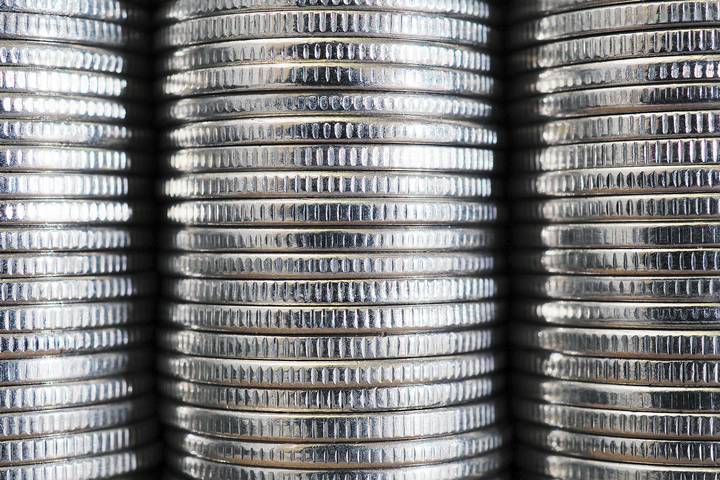The importance of nickels is not just in their monetary value. Their design and dates tell a story of people and events at a particular time in history. While age is a critical determinant of their value, the condition they are in at the time of auction could push prices up by thousands of dollars.
Over the years, there have been many nickel projects in the United States and around the world. Some nickel projects are particularly notable because they led to interesting discoveries and valuable profits. Below are six types of nickels you might want to keep should you come across them:
Type #1: Shield Nickel Series
The shield nickel series consists of nickels dated between 1866 and 1883. They’re the most popular in the US, and the most in-demand among them have fetched some good money at auctions. For instance, the 1875 U.S. nickel was sold by Heritage Auctions in 2006 November for $5,175.
The dated rare versions of the shield nickel have good value going by their popularity at auctions. Shield nickels were only produced in Philadelphia by a single Mint. They, therefore, don’t carry a mintmark. A date set for these nickels only has sixteen coins. Rare Shield nickels trade from about a minimum of $18, a value assigned to a date for an extremely worn coin. For instance, depending on their condition, shield nickels dated 1879 or 1880 can trade from $200 to more than $1,000.
Type #2: Liberty Head Series
These type of nickels are dated between 1883 and 1912. Commonly known as “V” nickel courtesy of its reverse design, the Liberty Head nickel has a rich history of scandals and production mistakes. Its engraver, Charles E. Barber, is credited with its design. For almost thirty years, the Mint produced large volumes of the nickel. After some people started to gold-plate it so they can trade them as 5-dollar gold pieces, the Mint decided to print the word “cents” on the reverse. Due to this initial omission, two versions of the nickel were available during its first production year.
While Liberty Head nickels are extremely valuable, their real value depends on their date and rarity. A V nickel dated 1889 and in good condition can trade from $10 while one dated 1885 that hasn’t been circulated could fetch over $1,500.
Type #3: Buffalo Nickel Series
Perhaps the most famous Buffalo nickel is the 1918 one that auctioned at $126,500 in January 2007. The Buffalo nickel has 25 years of minting history and is seen as the pride of American coinage. Its design depicts the country’s historical roots. On one side is a Native American while the other features a buffalo atop one of the scenic landscapes in the country.
It’s a famous coin with collectors. Those in mint condition fetch better prices than the worn ones. While they become rare and valuable with age, other factors determine the value of the Buffalo nickel. For instance, first-edition Buffalo nickels in pristine condition are extremely popular.
Type #4: Jefferson Nickel Series
The head of this nickel is engraved with the words, “In God We Trust”. They are also highly sought after going by their price at the auctions. For instance, the 1950 Jefferson nickel was auctioned by Heritage Auctions for $17,250 in September 2006.
Among 5-cent denominations, the Jefferson nickel is the most enduring. For over sixty years, there were no major changes in its original design series. It has a picture of Thomas Jefferson, making it one of three American coinage series that feature a past American President. Despite its age, the Jefferson Nickel series is coveted by professional and newbie collectors alike.
Type #5: The 1926 FAR 6
This is an extremely rare Canadian nickel also known as the “King of Canadian Nickels.” The 1926 5-cent nickel comes in two versions identified by the positioning of “6” under the maple leaf. The most popular nickel is known as “near 6” since 6 is almost touching the maple leaf. The “far 6,” on the other hand, has “6” positioned some distance away from the maple leaf. It is extremely rare with more common varieties attracting a couple of hundreds of dollars. The rarer ones in pristine condition can fetch $10,000 or more.
Type #6: The 1947 Dot Nickel
These coins commemorate the independence of India. Before this period, the obverse of the nickel featured the Latin words “GEORGIVS VI D:G REX ET IND:IMP:”, which translates into “George VI King and Emperor of India.” Since George VI ceased to be India’s emperor after the latter attained independence in 1947, the writings had to be removed.
Due to difficulties in sourcing for new dies to cast the 1948 nickels, to meet soaring demand, the 1947 coins were struck with a tiny maple leaf adjacent to the date. However, with time, the maple leaf faded and became a small dot near the date; hence, the name 1947 dot nickel. The “dot” coins are popular collectors’ items. They trade from $100 to $2,500 depending on their condition.
If you come across any of the above coins while rummaging through grandpa’s or grandma’s stuff, don’t throw them away. You could be holding in your hands a gem that’s worth a couple of hundreds, or even thousands, of dollars.

